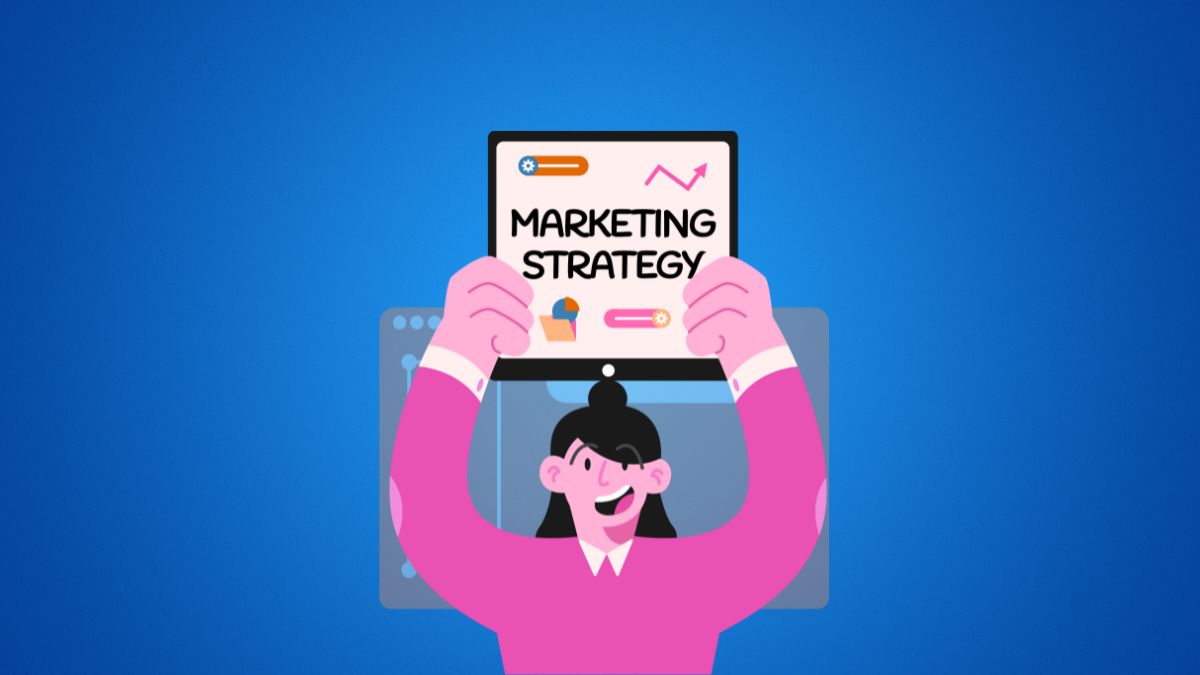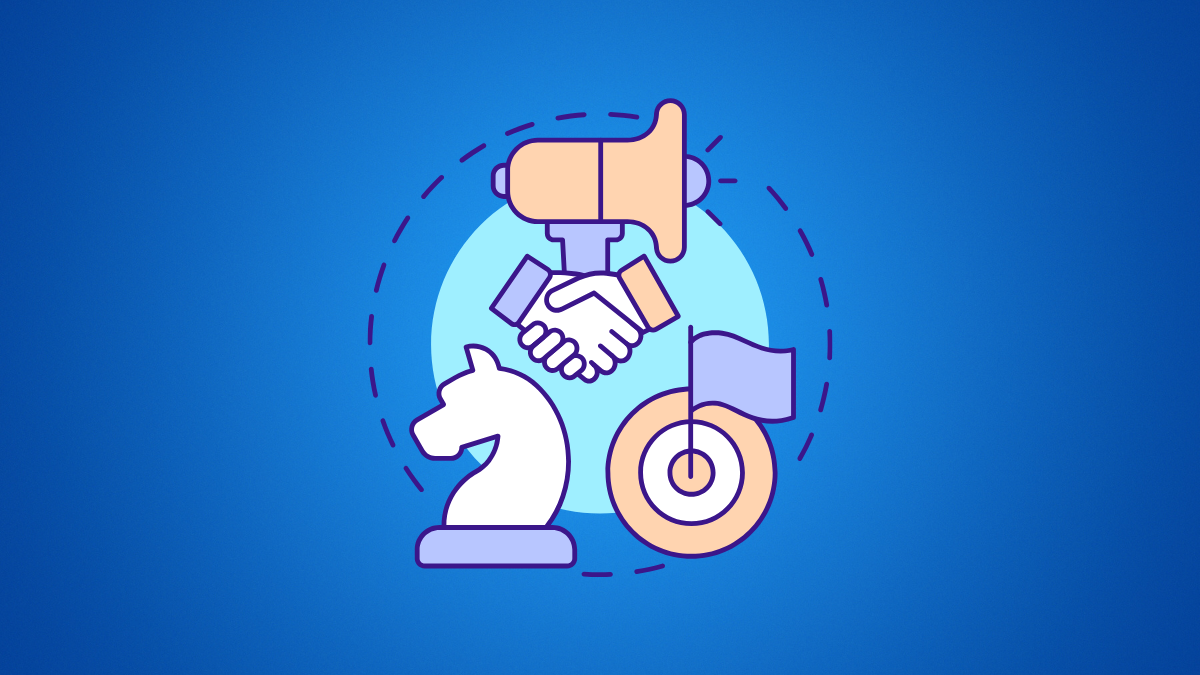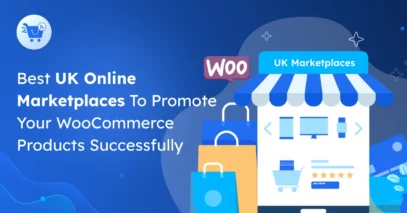It’s been many years since I started helping WooCommerce store owners and eCommerce brands plan real marketing strategies, not just random tactics.
And here’s why strategy matters: 29.59% of marketers said it increases ROI, and 27.36% said it helps them reach the right audience faster.
I’ve seen this firsthand. When you stop guessing and start following a clear plan, your results change fast.
The problem is, many store owners jump from one trend to another without understanding what truly fits their business.
This guide is here to fix that. I’ll walk you through proven eCommerce marketing strategies that work especially for WooCommerce.
Not everything will apply to you, and that’s okay. I’ll help you figure out what makes sense for your store.
Let’s dive in and build a marketing strategy that’s made for your WooCommerce business.
TL;DR – What Are Marketing Strategies & How They Work
- A marketing strategy is a clear plan to attract the right people and turn them into buyers.
- It matters because without it, your promotions won’t get results.
- Marketers with a solid strategy are 3x more likely to succeed (CoSchedule).
- There are different strategies:
- Content, social media, referral, and email marketing
- Each one fits a different audience and business type
- A strategy is your direction. A plan is your to-do list to make it happen.
- To create a marketing strategy:
- Know your audience
- Set clear goals
- Choose the right platforms and tools
- High-performing campaign ideas:
- BOGO deals
- Free shipping offers
- Bundle discounts
- Real-life examples:
- Skincare: Recommend routines via email
- Electronics: Use upsells to increase AOV
- Fashion: Launch seasonal drops with urgency
- Education: Offer free workshops or previews
- TikTok and Instagram are great for quick reach:
- TikTok: Show quick tips and behind-the-scenes
- Instagram: Use Reels and stories to drive action
- Smart marketing techniques:
- AOV strategy: Suggest extras at checkout
- VR marketing: Let users explore before buying
- Walmart-style approach: Use data and discounts smartly
- Track what’s working using real numbers:
- Look at clicks, conversions, and customer actions
- Use these tools to implement your strategy:
- Dynamic Discount – for creating targeted offers
- Google Analytics – to track performance
- WPFunnels – to design your sales journey
- Hootsuite – to schedule social posts
- SEMrush – for SEO and keyword planning
- Final tip: Combine the right strategy with the right tools like Dynamic Discount, WPFunnels etc. to grow faster and smarter.
What are Marketing Strategies & How does they Work?

A marketing strategy is your overall plan to attract the right people to your store and turn them into paying customers. It helps you decide what to say, where to say it, and when to say it.
For example, if you run a WooCommerce store selling cosmetics, your strategy could include Instagram tutorials, email reminders for abandoned carts, and a weekend sale for new buyers.
When you follow a clear strategy, your efforts work together with your content, offers, and ads, all supporting one goal. That’s how you grow faster without wasting time or budget.
Why is a Marketing Strategy Important?
Before you get into the types and steps, let’s take a moment to understand why a marketing strategy matters in the first place. Because without it, even the best tools and tactics won’t bring real results
- Audience Targeting: A strong strategy helps you define your target market and focus on target customers who are most likely to buy. Instead of marketing to everyone, you create a more customer-focused business. This means higher conversion rates and better use of resources. You’re not just reaching people, you’re reaching the right ones.
- Budget Control: With a marketing strategy, your marketing budget is aligned with your business goals. You’ll know where to spend for maximum impact through high-priority marketing programs. This avoids waste and ensures smarter decisions. Every dollar supports your strategic goals.
- Brand Clarity: Your unique value proposition becomes clearer with a strategy. It keeps your message consistent across every marketing activity, from emails to video marketing. This builds stronger brand trust and brand awareness. A clear voice leads to stronger customer loyalty.
- Goal Alignment: A strategy connects your marketing activities to bigger business goals like growth or new customer acquisition. Everything, from content to promotions, works toward a shared purpose. You can stay focused on your long-term vision. That’s how you scale with intention.
- Better ROI: Strategies lead to measurable results. You track key performance indicators (KPIs) to see what’s working and what’s not. That means better returns from the same effort. It’s how you turn marketing into revenue, not just traffic.
- Smarter Decisions: With tools like SWOT analysis and customer data, you can avoid guesswork. You’ll know when to launch a market penetration strategy or shift to a market development strategy. You can also adapt quickly, stay agile, and act based on real insight.
- Competitive Edge: In a competitive market, a solid strategy helps you stand out from key competitors. Highlight what makes your business brand unique in the eyes of your audience. While others follow trends, you build trust through clarity. That’s how you can lead in your niche.
- Customer Trust: Consistency in your message leads to higher customer satisfaction and loyalty. Whether it’s through content, support, or customer relationship management, people trust brands they understand. That trust boosts engagement and long-term support. Familiarity builds connection.
- Long-Term Growth: A strategy is not just about today; it’s a comprehensive plan for long-term success. It supports both existing markets and growth into new ones through tactics like a diversification strategy. That’s how your business stays relevant and thrives over time.
- Team Clarity: When you have a plan, your team understands your business plan, your sales techniques, and your messaging. Everyone moves in the same direction, guided by clear strategic goals. That improves collaboration and drives focused business growth.
Types of Marketing Strategies

Now, let’s explore the different types of marketing strategies that can help grow your business and reach the right customers effectively.
- Content Marketing: Making helpful blogs, videos, or guides attracts people and answers their questions. This builds trust and encourages them to come back to your store. It’s a smart way to connect with customers before trying to sell. Over time, it grows your audience naturally.
- Email Marketing: Sending emails helps you stay in touch with customers and tell them about deals or new products. It’s one of the easiest ways to keep people interested. Emails build relationships and remind people why your brand matters. Regular, helpful emails work best.
- Social Media Marketing: Using Instagram, TikTok, or Facebook lets you share your brand’s story and personality. Posting real, fun content helps people feel connected to your business. It’s a good way to get noticed and build a loyal following. Talking with customers keeps them coming back.
- SEO (Search Engine Optimization): Making your website easy to find on Google brings visitors who are already looking for your products. This is free traffic that lasts a long time. It takes some work but pays off by helping people discover your store. Good content and fast pages help you rank better.
- Paid Advertising: Ads on Google or social media show your products to the right people quickly. This helps you reach new customers fast when you want to grow. Paid ads cost money, but when done right, they bring good results. It’s important to watch and adjust ads often.
- Influencer Marketing: Working with influencers helps your products get seen by their followers. People trust influencers’ recommendations, so it can boost your brand fast. It’s a great way to reach new audiences with real endorsements. Finding the right influencer is important.
- Affiliate Marketing: Letting others sell your products for a commission helps you reach more people. Affiliates are like extra sales helpers who earn when they sell. This way, you only pay for real results. It’s a smart way to grow without big upfront costs.
- Referral Marketing: Happy customers telling friends about you is effective. Offering rewards or discounts makes people want to share your brand. Referrals bring in new buyers who trust your product already. It’s a natural way to grow your business.
- Product Development Strategy: Making better products or new ones based on customer feedback keeps your store fresh. This helps you meet what customers want and stay ahead of competitors. It shows you care about solving problems. New products help attract more customers.
- Market Penetration Strategy: Selling more of your current products to existing customers through sales or loyalty programs increases revenue. It’s easier to sell to people who already know and trust you. This strategy helps you grow without finding new buyers. Repeat customers are very valuable.
- Market Development Strategy: Finding new types of customers or selling in new places helps your business grow. It means reaching people who haven’t heard of you before. This opens new opportunities and spreads risk. Research is important before trying this.
- Diversification Strategy: Adding new products or services helps reduce risk and brings in new money. It helps your business stay strong when markets change. Diversifying keeps things fresh and opens doors to different customers. It’s a smart way to plan for the future.
Marketing Strategies vs Marketing Plan
Here is a comparison table of marketing strategies vs marketing plans. It helps you see how a marketing strategy sets the direction, while a marketing plan lays out the practical steps to get there.
| Aspect | Marketing Strategy | Marketing Plan |
|---|---|---|
| What it is | The big picture — your overall approach to reach customers and grow your business. | The step-by-step details of what you will do to execute your strategy. |
| Focus | Defines your goals, target audience, and how you’ll stand out. | Lists specific marketing activities, timelines, and budgets. |
| Purpose | Guides decision-making and keeps your marketing consistent. | Helps organize and track daily tasks and campaigns. |
| Timeframe | Long-term and flexible — it can evolve as your business grows. | Shorter-term, often covering weeks or months. |
| Example | Deciding to focus on social media and content to build brand awareness. | Planning weekly Instagram posts, email campaigns, and ads. |
| Who creates it | You or your leadership team to set the direction. | Usually the marketing team or person responsible for daily marketing. |
| Why it matters | Without a strategy, marketing efforts can feel random and scattered. | Without a plan, even a good strategy won’t get done properly. |
How to Create a Marketing Strategy – Step-by-Step Process

Now, let me walk you through a clear, step-by-step process to create an effective marketing strategy—using a skincare business as an example, so you can understand it easily and apply it to your own business.
- Step 1 – Define Your Goal: Start by deciding what you want to achieve, like increasing sales of your best-selling moisturizer or improving customer value through repeat purchases. Clear goals keep your marketing focused and effective. This foundation guides every decision you make.
- Step 2 – Conduct Market Research: Learn about your target customers’ preferences and behaviors by doing thorough market research. Understanding customer preferences helps you tailor your messages and offers, such as promoting natural skincare for eco-conscious buyers. This research is essential for smart marketing strategies.
- Step 3 – Analyze Competitors: Check what your competitors do well and where you can improve. Use this insight to find your unique edge, maybe your product’s ingredient quality or pricing. Offering special deals with the Dynamic Discount plugin can help you stand out in a competitive market.
- Step 4 – Choose Marketing Channels: Pick platforms where your audience spends time, Instagram and Facebook are perfect for skincare visuals, email keeps customers updated, and traditional marketing like local events can boost community trust. Focus your efforts where they’ll drive the most customer engagement. This makes your marketing more efficient.
- Step 5 – Craft Your Message: Create simple, clear content that speaks directly to your customers’ skincare concerns and shows how your products deliver real value. Share testimonials or before-and-after results to build trust. Good messaging encourages engagement and loyalty.
- Step 6 – Set Your Budget: Decide how much you can spend and allocate your funds wisely. Invest in ads, content creation, and tools to offer personalized deals without hurting profits. A clear budget keeps your strategy practical and manageable.
- Step 7 – Plan Your Actions: Break down your strategy into specific tasks with timelines, schedule social posts, email campaigns, and discount promotions. Turning your ideas into real steps ensures nothing important is missed.
- Step 8 – Track and Adjust: Measure your sales, website visits, and customer feedback regularly. Use this data to adjust your campaigns and improve your marketing strategies over time. Being flexible helps you stay successful in the long run
Campaign Marketing Strategies to Generate Massive Sales

Now, I’m going to share some effective campaign marketing strategies to generate massive sales that you can start using right away to grow your business. Let’s see one by one:
- Context Emails: Send emails that match what your customers are doing right now. For example, if someone looks at a product but doesn’t buy, send a quick reminder with a special offer. This makes your emails feel helpful and personal. It can really bring people back to buy.
- Build Community: Let your customers feel like they’re part of your brand family. Ask them to vote on new products or give early access to new launches. When people feel involved, they stay loyal and talk about your brand. It’s more than just reviews; it’s a real connection.
- Smart Pricing: Use tools like the Dynamic Discount plugin to change prices based on demand or customer actions. This way, you can offer great deals without losing money. It keeps your customers interested and coming back for more. It’s a smart way to stay competitive.
- Purpose Campaigns: Show your brand cares about causes your customers care about too. When your marketing feels real and honest, people trust you more. This emotional connection makes them want to support your business. Authenticity wins hearts.
- Hands-On Events: Host pop-up shops or virtual demos where customers can try your products. Experiencing your brand in real life makes people more likely to buy your products. It also creates buzz and excitement. These moments stick in their minds.
- Chat Directly: Talk with customers through SMS or chat apps to answer their questions fast. Personalized chats help customers feel valued and more confident to buy. Quick replies can turn interest into sales. People love getting help right away.
- Second Chance: Remind visitors who left without buying by offering special discounts. These “second-chance” deals bring them back and boost your sales. It’s an easy way to turn missed opportunities into wins. Don’t let visitors slip away.
- Local Focus: Tailor your marketing to neighborhoods or specific groups. Small, focused messages feel more personal and relevant to your customers. This often leads to more sales and loyal customers nearby. Local love goes a long way.
- Story Videos: Share videos that tell your brand’s story or show behind the scenes. Videos keep people interested and build trust. They help customers feel connected and understand your products better. This builds a strong bond.
- Exclusive Members: Give special discounts or early access only to members or loyal customers. This makes them feel appreciated and keeps them coming back. Membership perks turn your buyers into fans. It’s great for repeat sales.
– Learn more full guide – Powerful Marketing Campaigns to Generate Massive Sales
Examples of Marketing Strategies in Different Industries & Platforms
Let’s now look at some real examples of marketing strategies in different industries so you can better understand how to apply these ideas to your own business.
1. Industry-Specific Marketing Strategies

Now, I’m going to share industry-specific marketing strategies, so you can easily understand how each industry tailors its approach and how you can apply similar tactics to your own business.
i. Skincare Marketing:
If you sell skincare, focus on what your customers really want – healthy, glowing skin with simple solutions. Your marketing should feel helpful and easy to understand.
For example, share a short video showing how you use your product in a daily routine. This is a great marketing strategy example because it shows real results and builds trust.
Keep your content clear and friendly like before-and-after photos, tips for skin types, and real customer reviews. These simple touches make a big difference in getting people to buy.
ii. Electronics Marketing:
Selling electronics means helping customers understand how your product fits into their daily lives. Clear benefits, easy comparisons, and real use cases go a long way.
For example, show how your wireless earbuds make workouts easier with a quick demo video or a customer story. It highlights real-life value.
Use simple visuals, helpful reviews, and short guides to explain features. The easier you make it for someone to choose your product, the more likely they are to buy.
- Learn more – Best Online Electronics Marketing Strategies to Boost Sales
- Learn more – An Effective Guide to Selling Electronics Online for Google Shopping
iii. Furniture Marketing:
Furniture marketing is about showing how your products improve everyday living. Highlight comfort, design, and how easy it is to fit your furniture into different spaces.
For example, create a video tour showcasing a living room makeover using your furniture pieces. This helps customers see the transformation and imagine it in their own homes.
Focus on sharing practical tips like care instructions or styling ideas. Offering helpful content builds trust and encourages people to choose your brand.
iv. Fashion Marketing:
Effective marketing means really understanding what your customers want and giving it to them. When you focus on helping them, they’ll trust you and want to buy from you.
For example, if someone looks at a product on your site, sending them a friendly email about it shows you care. This small step makes your marketing feel personal and boosts your chances of making a sale.
Also, pick the channels where your customers spend time, like social media or email. When your message is clear and shows you understand them, your business will grow stronger.
v. Education Marketing:
Education marketing is all about showing how your courses or programs help people reach their goals. Focus on clear benefits like skill-building, career growth, or flexible learning.
For example, sharing success stories from your students or short video lessons gives a taste of what you offer. This is a strong, effective marketing strategy because real proof builds trust.
Use email follow-ups and social media to keep your audience engaged and remind them about upcoming classes. Staying helpful and consistent will help more people sign up and stay committed.
2. Platform Specific Marketing Strategies

You’ve already seen how different industries use marketing, and now I’m going to show you some platform-specific marketing strategies that work well across businesses.
i. Tiktok marketing:
TikTok is all about short, fun videos that grab attention quickly. If you want to reach more people, especially younger audiences, this platform is great for you.
For example, you can create quick videos that show how your product works or share valuable tips related to your business. When you join trends and keep it real, your content becomes easy to share and notice.
To succeed, be authentic and engage with your viewers by replying to comments and taking part in challenges. Building this connection helps you grow a loyal audience over time.
ii. Instagram marketing:
Instagram lets you show your brand’s story with photos and short videos that catch the eye. It’s a great place for you to connect with customers through visuals they love.
For example, you can share behind-the-scenes moments or customer testimonials that feel personal and real. This helps build trust and makes people want to follow and buy from you.
To get the most out of Instagram, use Stories and Reels to stay visible daily. Engage with your audience by responding to comments and DMs; that personal touch makes a big difference.
- Learn more – Instagram Marketing Strategy: 10+ Handy Tips to Follow
- Learn more – How To Create Instagram Product Feed For WooCommerce – A Complete Guide
3. Strategic Techniques of Marketing

Now that you’ve seen platform-specific strategies, let’s dive into some strategic techniques of marketing that can work across any platform or industry to boost your results even faster.
i. AOV Marketing
AOV (Average Order Value) marketing helps you increase how much each customer spends in one purchase. It’s about offering the right extras that feel helpful, not pushy.
For example, when someone adds a phone to their cart, showing “frequently bought together” items like a charger or case can gently raise the total value. It’s simple and effective.
Keep the suggestions relevant and easy to accept. This small step boosts your sales while making the shopping experience better for your customers.
ii. VR Marketing Strategy
VR marketing gives your customers a way to step into your world. It’s not just about showing your product, it’s about letting them experience it in a way that feels real and memorable.
For example, if you run a travel agency, you could let people explore a virtual tour of a beach resort before booking. They can look around, check out the rooms, and feel the vibe—all from their phone or headset.
This kind of experience builds trust fast. It makes your offer more exciting and helps people feel confident in their decision, which means more conversions for you.
- Learn more – Creative VR Marketing Ideas to Implement Right away
iii. Walmart Marketing Strategy
Walmart keeps things simple, with low prices, useful deals, and products people need. It makes you feel like you’re saving without hunting for a sale. You can do the same in your business.
For example, offer small bundle deals or highlight regular low prices so your customers feel they’re always getting a good deal from you.
Also, stay visible. Send friendly emails, show up in local searches, and keep your message clear. If people see value and trust you like they do with Walmart, they’ll keep coming back.
How to Track Effective Marketing Strategies

To make sure your efforts are truly paying off, here’s how to track effective marketing strategies:
- Set clear goals: Start by knowing what success looks like for your business, whether that’s more sales, leads, or traffic. Clear, measurable goals keep you focused and make it easy to see your progress.
- Use analytics tools: Use tools like Google Analytics or WooCommerce reports to understand how visitors interact with your site. Regularly checking this data helps you spot what’s working and where to improve.
- Monitor conversion rates: Keep track of how many visitors take the action you want, like buying or signing up. This tells you if your marketing is effective and shows where you need to tweak things.
- Keep an eye on CAC: Know how much it costs to bring in each new customer. If your customer acquisition cost starts climbing, it’s a good signal to adjust your marketing budget or strategy.
- Track ROI by channel: Look at the return from each marketing channel—email, social media, ads—and focus your budget on what’s delivering the best results. Don’t be afraid to pause what’s not working.
- Run A/B tests: Try different headlines, images, or calls to action to see what your audience responds to best. Testing takes the guesswork out and helps you improve your campaigns over time.
- Collect customer feedback: Ask your customers for their thoughts through surveys or reviews. Their insights help you understand what’s working and how to make your marketing better.
- Check engagement metrics: Watch clicks, opens, likes, shares, and comments to see how your audience connects with your content. More engagement usually means better chances of turning interest into action.
Tools to Implement Marketing Strategies

Now, let’s explore some useful tools that can help you implement and boost your marketing strategy effectively.
- Dynamic Discount: This tool helps create personalized discounts. It encourages your customers to spend more by offering timely, relevant savings. Using dynamic discounts can boost your average order value and increase conversions without manual effort.
- Google Analytics: This tool helps you understand how visitors interact with your website. It shows which marketing campaigns are driving traffic and where users can be dropping off. These insights make it easier to improve your strategy and focus on what works best.
- WPFunnels: When turning visitors into customers, WPFunnels lets you build smooth, effective sales funnels. It supports upsells, order bumps, and checkout optimization to boost your average order value. This tool simplifies funnel creation so you can focus on growing sales.
- Hootsuite: Managing multiple social media accounts can be overwhelming, but Hootsuite simplifies the process. Schedule posts ahead of time, track engagement, and monitor conversations all in one place. This saves time and helps keep your social marketing consistent and effective.
- SEMrush: If SEO and competitor analysis are a priority, SEMrush offers effective tools for keyword research, backlink tracking, and content optimization. It helps you to improve search rankings and attract more organic traffic. This tool gives a clear edge in understanding and outperforming competitors.
Conclusion
Having a clear marketing strategy helps you focus on what really matters for your business growth. It guides you to reach the right audience with the right message.
Keeping track of your results lets you see what’s working and what needs tweaking. This helps you stay flexible and improve your marketing over time.
Using helpful tools makes managing your campaigns easier and more effective. They save you time and give you useful insights to grow smarter.
One tool to try is Dynamic Discount, which gives your customers personalized savings that encourage them to buy more. Adding it can boost your sales and average order value.
** FAQs **
What is the difference between a marketing strategy & marketing plan?
- A marketing strategy defines the long-term approach to reach your audience and achieve goals. A marketing plan details the steps and timeline to execute that strategy. Understanding this helps when exploring different types of marketing strategies for your business.
How often should I review and update my marketing strategy?
- Review your marketing strategy at least every six months or after big changes. Regular updates ensure you stay aligned with market trends and customer needs. This keeps your approach focused on effective marketing strategies that deliver results.
Can small businesses benefit from complex marketing strategies?
- Small businesses benefit most from simple, focused marketing strategies. A clear marketing strategy tailored to your audience drives better results without overcomplicating things. Start small, test, and grow as you learn what works.
How does customer feedback influence marketing strategy?
- Customer feedback offers insights into what your audience wants and values. Using this input helps shape marketing strategy examples that connect and resonate. It makes your marketing more relevant and effective.
What role does content marketing play in an overall marketing strategy?
- Content marketing builds trust by providing valuable information that engages your audience. It supports other channels like social media and ads. Including content in your marketing strategies creates long-term growth and stronger customer relationships.
![What is Marketing Strategy – All in One Guide [2025]](https://rextheme.com/wp-content/uploads/2025/08/What-is-Marketing-Strategy.webp)


